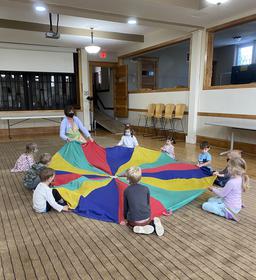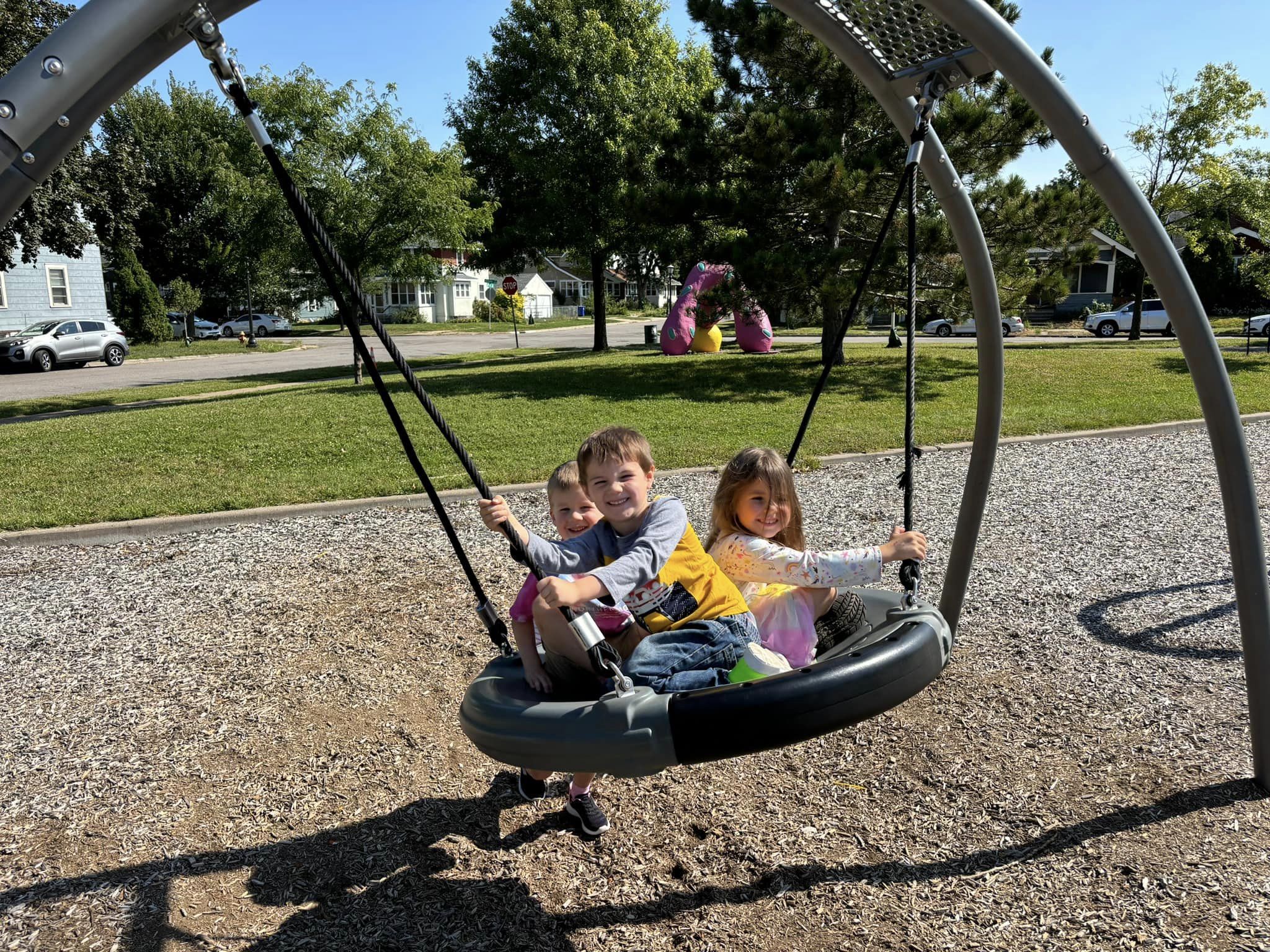Children's Center Montessori
1536 Minnehaha Ave W. St. Paul, MN 55104
7:30 a.m. to 5:00 p.m.
651-645-6053
Typical Day
While each day at The Children’s Center contains common elements, the day will vary from individual to individual, from day to day, and from early in the year to later. An important concept within Montessori is the prepared environment. Careful attention is paid to providing an environment that meets the unique needs of children during their pre-school and kindergarten years at The Children’s Center.
Our spacious classroom is carefully arranged and equipped to provide areas for quiet and energetic play, individual and group learning and for creative activities as well as physical activities. Windows all along the east and west provide warm sunlight even on the coldest days. Smaller areas of concentration include practical life materials, the sensorial area, art, science, mathematics, language development, and geography/history/cultural studies. Additionally, there is the playhouse, a free play corner (containing large muscle equipment), the music area and a library. The lunch and snack room and wood working shop are partially divided from the open classroom by floor-to-ceiling curtains.
The Children’s Center opens at 7:30 a.m. to accommodate children who may need an extended school day. All areas of the classroom are open, giving each child a wide range of activities from which to choose. Some early arrivals are anxious to work with materials or on quiet projects, or begin their day in conversation with friends or teachers. Others choose more energetic activities.
At 9:00 a.m. the regular morning session begins. As children arrive they are greeted and begin with activities of their choice in the classroom. Children work individually or in small groups, choosing materials according to interest and ability. Teachers are always available to present new materials, to assist with projects, as participants in games or for conversations. It is not uncommon to find one teacher working one-to-one with a child learning a new task, another assisting with an art project for a small group, and the third surrounded by several children, each working on a different activity and talking enthusiastically. There is always a lap to sit on and someone to listen to an ardent narrative. Children often assist one another as well. They enjoy reading to each other, teaching each other games, helping with more difficult tasks, such as map puzzles, tracing sandpaper letters or drawing pictures for each other.
At this time of day children are not divided by age but are encouraged to group themselves spontaneously, and to choose tasks based upon interest and readiness, rather than age. We find that each child adds to the group without undue pressure. Friendships develop naturally in a relaxed atmosphere.
Juice and a snack are available for the children mid-morning (and mid-afternoon), with one of the children as a server. Children come at their convenience, as they finish a task. Birthday parties are an exception, when we gather as a group to celebrate.
The group lessons begin at 10:30 in the morning. At this time the children are usually divided into two groups, based upon ability and experience. The teaching approach in these lessons differ from that in the classroom. Children learn to participate in a more teacher-directed setting. On a day in which we have a special guest, a holiday celebration, or an entertainment program, we would all be together. Or, on occasion, we may be cooking, baking, decorating gingerbread people or a similar activity. This would mean taking turns in very small groups.
A typical group lesson (referred to as circle time by the children) varies from early in the year to later. In the beginning we present new materials and do activities that will help the children become better acquainted with one another as a part of the lesson. As the year progresses we are learning, but more time can be spent on special areas of study, some of which are sequential and will take several days. Younger children may be working on the pre-history time-line, learning finger plays, learning the months of the year or seasons, or studying rainbows via light experiments. Older children may be experimenting with magnetism, studying the Greeks and Romans, practicing a play for Thanksgiving, working on parts of speech, or learning to tell time on various types of clocks. Also included in group lessons are stories, songs, poems, puppet shows, holiday celebrations and seasonal activities.
After the morning group lessons, it is gym/park time for all the children. Weather permitting we go to the Hamline Playground, a pleasant 2-block walk in the spring and fall. We also have a large adjoining gymnasium, which we rely upon during the winter months. Gym activities include a free-play period followed by group games usually. A variety of equipment is available, but the children love our twenty-foot gym mat (for gymnastics or creative activities during free play). Games vary as the year progresses and reflect the interests of the group. Children who may be initially too shy to try a new game are encouraged to watch for a bit before participating. Most become enthusiastic participants very quickly.
Story time begins at about 11:50, The children gather together in our library at this time. When parents arrive to pick up morning children, they finish hearing the story, if time permits, say good-bye to teachers and friends, and gather pictures, booklets or completed projects from their own drawer to take home.
After gym/park it is Lunchtime. Lunchtime at school is relaxed and conversational. Each child brings his or her lunch from home and we provide milk. Sometimes in the fall and spring we like to have outdoor picnics as weather permits. Children attending for a full day who need to rest or nap can do so starting around 1:00 p.m.. Those who do not nap will return to classroom activities.
In the afternoon the schedule is very similar to that of the morning.When observing our classroom at any given part of the day, it is very difficult to tell which children attend half days and which have longer days. They are similarly absorbed with work and friendship. Activities of the full-day children may vary however. Those who worked diligently on math, reading and geography in the morning may spend more time on art activities or on a science project in the afternoon, or vice versa. Half-day children tend to balance their activities, if not daily, then throughout the week. Although it is not obvious to the children, the adult helps to achieve this balance with encouraging words and a positive approach to activities. Children sometimes show signs that they are ready to work on a new piece of equipment, but they are not sure how to approach it. An invitation from a teacher will encourage a hesitant child to try something new. Others are more aggressive and will leap into new activities without hesitation.
The afternoon snack and a beverage are served beginning at about 1:30 p.m.. Special late-afternoon activities include art projects, group board games or more physical activities such as beanbag toss or musical chairs, etc. The full classroom is open at this time. The activities depend upon the interests of the children on a given day, and we are very flexible.
A late afternoon snack is available as well. Children depart at the time arranged by their parents, and leave with memories of an interesting day and enthusiasm for the next.
7:30 School Opens
9:00 Morning Session Begins
10:00 Morning Snack Available
10:30 Morning Group Lesson
11:15 Gym or Playground Period
11:50 Story Time
12:00 Morning Session Ends
Lunch Time
2:00 Afternoon Snack Available
2:50 Story Time
3:00 Late Afternoon Session Begins
4:00 Late Afternoon Snack Available
5:00 School Closes



